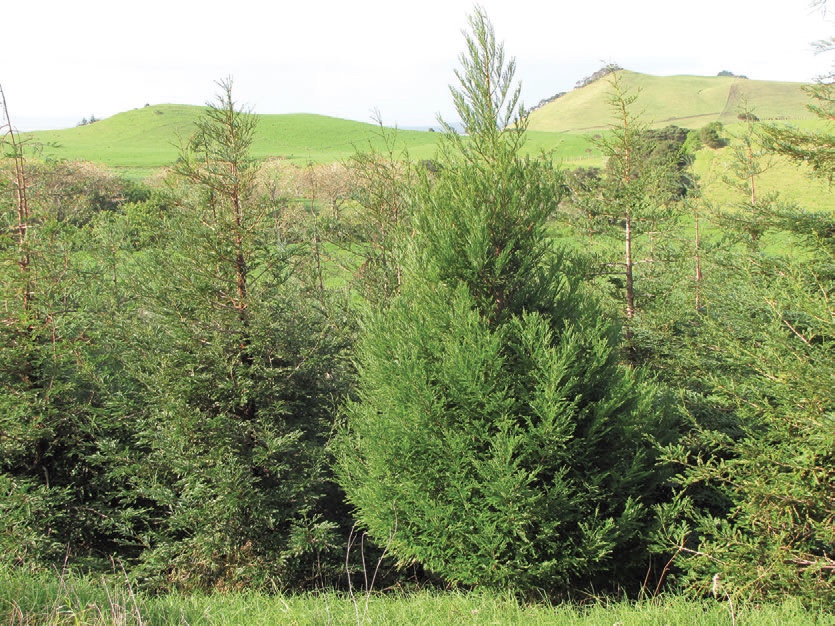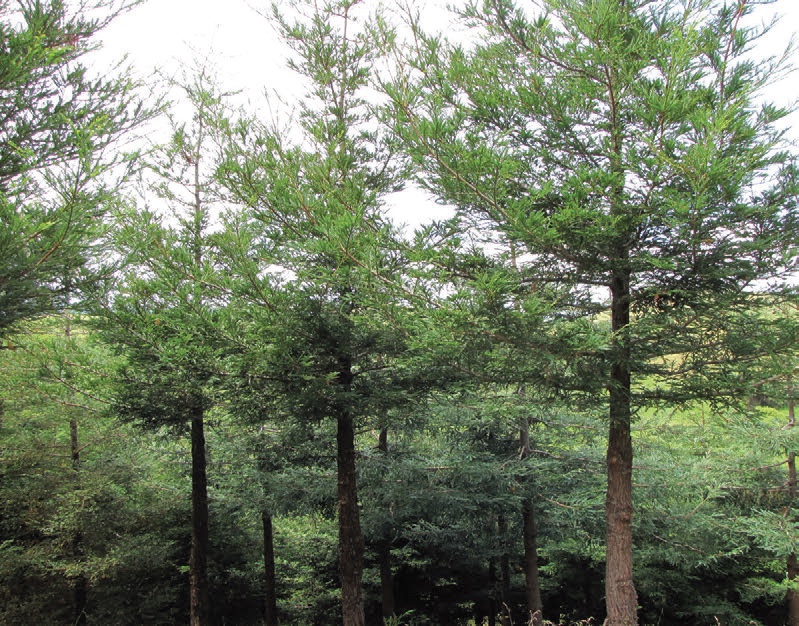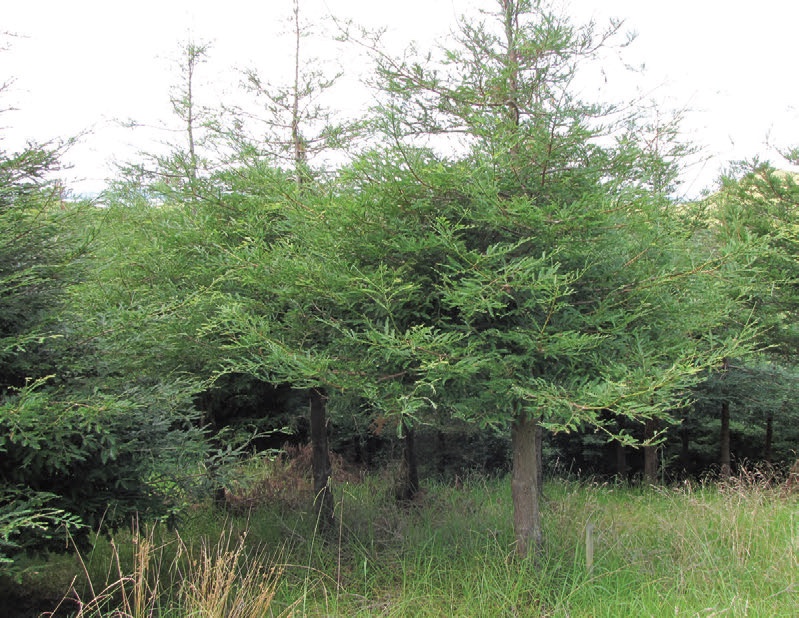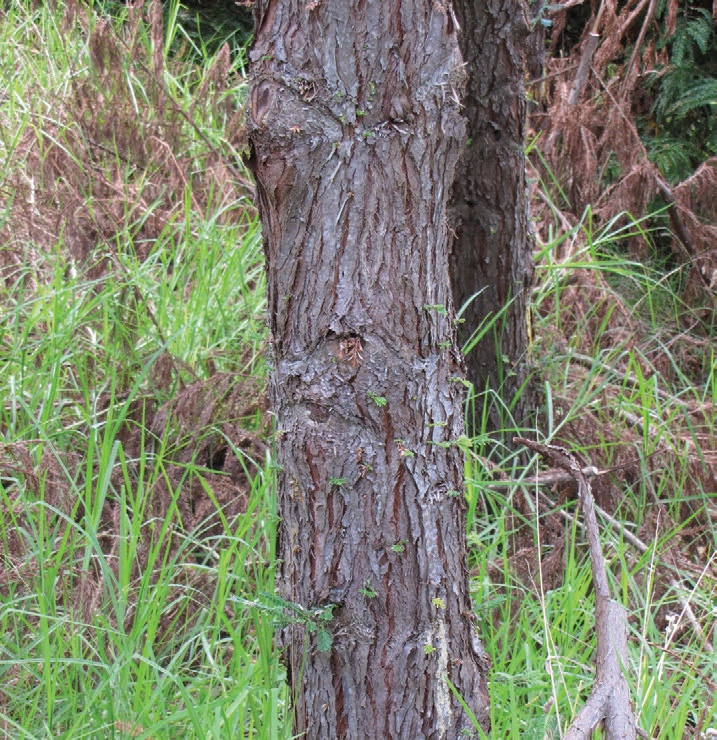Redwoods by Kaipara harbour
Harley and Margaret Gray, New Zealand Tree Grower May 2012.
In 2004 we agreed to participate in a clonal redwood trial organised by Wade Cornell. Our participation was of interest because we are probably at the northern extreme for this species. Full details of our property can be found in an article on our indigenous forestry activity in the February 2012 issue of Tree Grower.
We have sandy soils and lots of wind with a salt loading in our prevailing westerly. Although we have 1,100 to 1,200 mm of rain annually, the distribution is problematic with long dry summers. We have occasional fogs in the autumn and spring, but nothing like those occurring in the natural Californian habitat where redwoods can absorb up to a third of their water requirement through the leaves.
The trial starts
For the trial the clones were interspersed with seedlings sourced by Wade from dryer exposed sites in California in an effort to identify trees which might respond well to New Zealand conditions. We used a south facing slope to minimise drying out in summer. As we had only just started our project we had virtually no shelter at the time of planting. A perimeter of cypress was planted at the same time as the redwoods and this was later supplemented with eucalypts and pines.
Redwoods do not like wind.The tops of many trees were damaged in the early years. Although new leaders form,there is often more than one which need careful pruning. Now that we have better shelter, particularly from the eucalypts which grow rapidly in this environment, wind damage is less of a problem.
Good survival
The trees were mulched and watered by hand for the first three summers and yet they were still stressed by El Nino conditions. The survival at four years was 91 per cent for the clones and 92.6 per cent for the seedlings. Only five per cent of the clones developed double leaders but this occurred in 27 per cent of the seedlings.

Seedlings often show more vigorous growth in the early years, but they are much more prone to develop epicormic shoots on the main stem. There is enormous variation in the growth rate and form with seedlings, but the clones are notable for consistency, particularly in the branching pattern. This has implications for wind stability and pruning access.
In the trial plot the clones have been pruned with a 12 cm gauge. The seedlings have been left unpruned in the hope of this will encourage grass and epicormic suppression. We have also noticed that epicormic development varies between the clones.


The four best clones were chosen for a second planting where the objective is to harvest timber. There are alternate rows of crop trees and seedlings, and within crop rows seedlings and clones alternate and the latter will be left un- pruned. We are persuaded that pruning clones is worthwhile.
At six years a core was taken from a seedling at the bottom of the slope, and this showed only minor evidence of ring formation. It indicates that we are getting reasonable growth throughout the year due to our mild winters.
New clones
Some of our seedlings show good form and vigour in a tough environment. Wade has taken tissue from three trees and cloned them by micro-propagation. Trees grown from this process are now being used in trials on various sites in the North Island. Should they do well in other environments the next step is to determine wood properties and durability. It would be fun to have useful genetic material on the property.
It is very exciting to be involved in this trial work. The participation enhances the rewards we see for our efforts.


 Farm Forestry New Zealand
Farm Forestry New Zealand